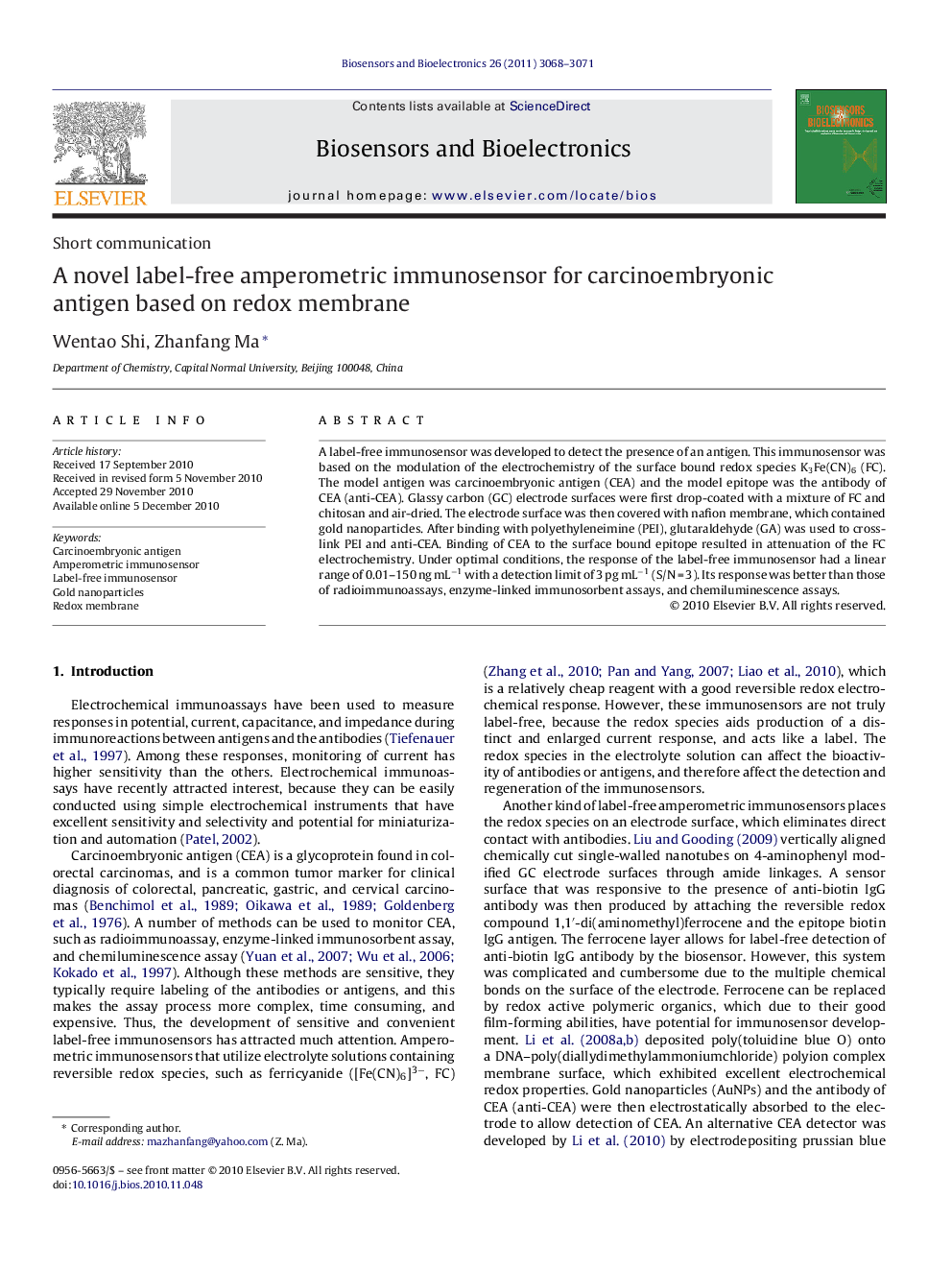| Article ID | Journal | Published Year | Pages | File Type |
|---|---|---|---|---|
| 10429559 | Biosensors and Bioelectronics | 2011 | 4 Pages |
Abstract
A label-free immunosensor was developed to detect the presence of an antigen. This immunosensor was based on the modulation of the electrochemistry of the surface bound redox species K3Fe(CN)6 (FC). The model antigen was carcinoembryonic antigen (CEA) and the model epitope was the antibody of CEA (anti-CEA). Glassy carbon (GC) electrode surfaces were first drop-coated with a mixture of FC and chitosan and air-dried. The electrode surface was then covered with nafion membrane, which contained gold nanoparticles. After binding with polyethyleneimine (PEI), glutaraldehyde (GA) was used to cross-link PEI and anti-CEA. Binding of CEA to the surface bound epitope resulted in attenuation of the FC electrochemistry. Under optimal conditions, the response of the label-free immunosensor had a linear range of 0.01-150 ng mLâ1 with a detection limit of 3 pg mLâ1 (S/N = 3). Its response was better than those of radioimmunoassays, enzyme-linked immunosorbent assays, and chemiluminescence assays.
Related Topics
Physical Sciences and Engineering
Chemistry
Analytical Chemistry
Authors
Wentao Shi, Zhanfang Ma,
